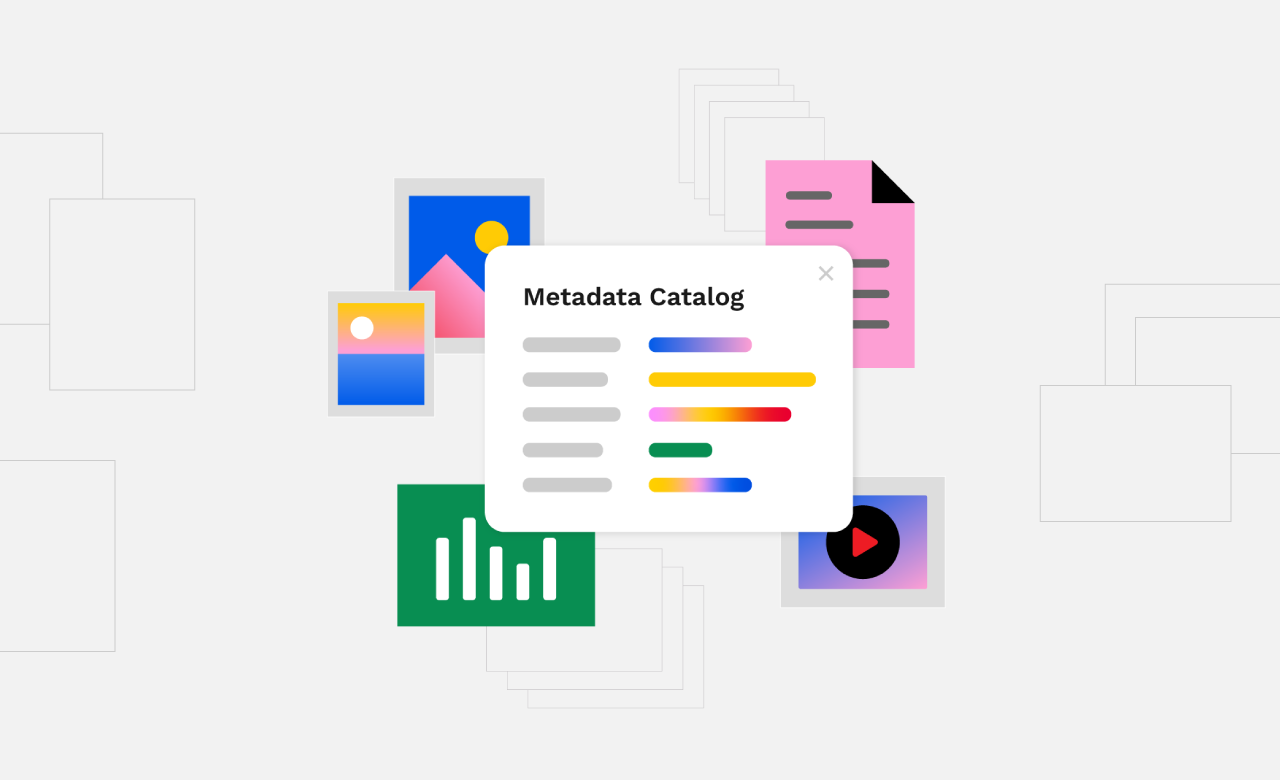Panzura Powers Future of Exabyte-Scale Data as Member of Single Namespace Working Group (SNS)
Panzura Symphony Heterogeneous Orchestration Aligns with the Principles of the SNS Initiative for Seamless Data Mobility
Panzura
Our enterprise data success framework allows enterprises to build extraordinary hybrid cloud file and data systems.
![]()
Platforms
Complementary file and data platforms that deliver complete visibility, control, resilience, and immediacy to organizations worldwide.
Solutions
From data resilience to global file delivery, we solve the toughest and most important data problems facing organizations globally.
Resources
Find insights, news, whitepapers, webinars, and solutions in our resource center.
Company
We bring command and control, resiliency, and immediacy to the world’s unstructured data. We make it visible, safeguard it against damage, and deliver it instantly to people, workloads, and processes, no matter where they are.

Table of Contents
Key Takeaways:
As data volumes grow, the real challenge lies not in its accumulation, but in its effective organization and utilization. A staggering 80% of enterprise data anguishes in unstructured formats – a digital wilderness of sprawling file servers, cloud repositories, video archives, email threads, and sensor streams.
This is particularly true as artificial intelligence (AI) drives further into data-driven processes. The vast, amorphous data expanse holds immense potential, yet remains largely untapped, presenting a significant hurdle, particularly in regard to Large Language Models (LLMs). The age-old adage, “garbage in, garbage out,” resonates forcefully in this context.
To truly harness the transformative power of LLMs and derive meaningful, actionable insights, technologists must first conquer the chaos of unstructured data. This is where Panzura Symphony emerges as a pivotal solution. The data services platform acts as a hub that orchestrates metadata harvesting, discovery, and intelligent utilization, transforming disparate, siloed data into a readily queryable asset.
Symphony’s core strength lies in its heterogeneous architecture. It enables seamless integration with diverse data sources and metadata schemas, such as relational databases, cloud platforms, and specialized applications, regardless of where they are stored in the cloud or on-premises. Symphony abstracts the underlying complexity of these disparate systems to present a unified metadata layer that can be queried and analyzed as a single entity.
This flexibility is crucial in a modern data landscape, where organizations rely on a multitude of tools and platforms to manage their information. Symphony can effectively harvest and utilize metadata regardless of its location or format.
The advantages are manifold. First, it eliminates the need for costly and time-consuming data migration or transformation projects, allowing technologists and data teams to leverage their existing metadata investments. Second, it facilitates real-time data access and analysis, which achieves faster and more informed decision making.
Third, it promotes interoperability and collaboration across different teams and departments, breaking down data silos and fostering a more data-driven culture. Symphony is also agile, allowing for the easy integration of new data sources and technologies as they emerge, ensuring that the platform remains a relevant and powerful tool for metadata management in the years to come.
Symphony transcends traditional data management paradigms by seamlessly integrating with best-of-breed, metadata-aware solutions. This integration establishes a dynamic, relational metadata catalog, revealing actionable intelligence from previously hidden unstructured data. It connects to and intelligently leverages metadata from a multitude of diverse catalogs and specialized tools, which allows sophisticated querying and transforms previously dormant data into a usable asset.
The inherent metadata harvesting and data intelligence capabilities of Symphony operate effectively as a standalone solution for leveraging metadata. However, its power is amplified through strategic integrations, notably with solutions such as GRAU DATA’s MetadataHub and IBM Fusion Data Catalog, to achieve an even greater level of versatility and functionality.
For example, the integration with MetadataHub allows Symphony to extend its reach into virtually any data type, creating a relational metadata catalog that transforms embedded metadata from more than 500 file formats into actionable intelligence. This is a unique capability that sets Symphony apart from other solutions that often struggle with the diversity of file formats found in enterprise environments.
Similarly, Symphony integration with IBM Fusion Data Catalog ensures that the data services platform can seamlessly interact with and leverage the vast data ecosystems within IBM’s storage and data management solutions. This offers a level of interoperability and data accessibility that is often unattainable with other metadata management platforms.
Taking a deeper look, Symphony is a powerful tool for a variety of IT and data personas. Data engineers can use Symphony to automate metadata extraction and cataloging, streamlining data pipelines for LLM training and AI analytics. Data scientists can leverage Symphony to discover and access relevant datasets, enriching their models with contextual metadata. IT administrators can achieve tremendous value by utilizing Panzura Symphony to enforce data governance policies and ensure compliance with regulatory requirements.
Security analysts employ Symphony to detect anomalies and potential threats by analyzing metadata patterns. And chief data officers rely on Symphony to establish a comprehensive data strategy, enabling data-driven decision-making across the organization. For example, a data scientist might use Symphony to quickly locate all documents related to a specific project, while a security analyst might use it to identify unusual access patterns that could indicate a data breach.
The Symphony platform also facilitates granular tagging, intelligent metadata filtering, seamless storage connector deployment, and workflow automation, effectively imposing structure upon unstructured data chaos. This provides data teams with unprecedented control and efficiency across their extensive and intricate datasets.
Symphony’s ability to ingest enriched metadata from critical data security, governance, and compliance solutions like Collibra, Alation, and OneTrust via Java Database Connectivity (JDBC), coupled with its native support for leading cloud solutions such as AWS, Azure, and Google Cloud, allows for a truly unified, holistic view of complex information landscapes. This integration is crucial for enhancing retrieval augmented generation (RAG) in LLMs, accelerating training cycles, and democratizing data accessibility across the enterprise.
When considering the context of ‘massive, complex data sets’ it’s important to understand how Symphony handles scalability and performance. Symphony is designed to scale up to petabytes and even exabytes of data, maintaining high performance through distributed architecture and optimized data processing techniques.
Query response times are consistently fast due to intelligent indexing and caching mechanisms, ensuring that users can access the metadata they need in real-time, even with extremely large datasets. Processing speeds are enhanced by parallel processing capabilities, allowing for efficient handling of concurrent requests and complex data transformations.
In terms of cost optimization, this goes beyond data migration and tiering. Symphony eliminates data silos and reduces the need for data duplication that creates data growth, minimizing storage overhead by providing a unified view of data. Its automation of data lifecycle management, including intelligent storage tiering and archiving, ensures that data is stored in the most cost-effective location throughout its lifespan.
Furthermore, Symphony’s ability to streamline data workflows and improve data accessibility reduces the time and resources required for data-related tasks, leading to significant operational cost savings.
Symphony also enhances data quality by providing a centralized platform for metadata management, which is crucial for identifying and rectifying data inconsistencies, errors, and incompleteness. It integrates with leading data quality tools to profile, cleanse, and validate metadata, ensuring that the data used to feed LLMs and other analytical applications is accurate and reliable, enabling teams to trust the data they are working with.
The expanding datasphere underscores the importance of effective data discovery and utilization for successful AI initiatives. Moreover, Symphony’s role as a zero-trust data broker, continuously re-authenticating user access before delivering sensitive data to LLMs, addresses critical security concerns. This is of particular importance when dealing with Personally Identifiable Information (PII), or other sensitive data, ensuring both data privacy and regulatory compliance.
The ability to effectively manage and control metadata, as facilitated by Panzura Symphony, is also highly relevant in the context of data sovereignty and similar initiatives. With increasing regulations around the world, such as GDPR and CCPA, technologists and the organizations they support need to have deep control over their data, including where it is stored, who can access it, and how it is used.
Symphony’s metadata management capabilities provide the necessary tools to track data lineage, enforce access controls, and automate compliance workflows, making it possible to meet the requirements of data sovereignty regulations. This is crucial for maintaining trust, ensuring legal compliance, and mitigating the risks associated with cross-border data transfers.
Panzura Symphony’s sophisticated metadata harvesting and intelligent data orchestration capabilities extend across a broad spectrum of industry applications, transforming raw, unstructured data into a potent strategic advantage. In the legal sector, Symphony reduces the time and costs associated with data discovery and identification, enabling fast and precise retrieval of relevant documents.
In manufacturing, Symphony facilitates enhanced quality control by enabling the analysis of camera data from production lines, reducing defect rates and improving product traceability. For financial institutions, Symphony aids in the detection of fraudulent activities, reducing false positives and improving the accuracy of risk assessment models.
In life sciences, Symphony rapidly surfaces data intelligence via metadata, without requiring organizations to interrogate the complete datasets themselves. This dramatically accelerates the pace of discovery.
In dynamic Internet of Things (IoT) and Industrial Internet of Things (IIoT) environments, Symphony transforms sensor data streams into a foundation for predictive maintenance, decreasing downtime and extending the lifespan of critical assets.
While other metadata management solutions are available, Symphony distinguishes itself through its unique combination of features and capabilities. Unlike traditional metadata repositories that often struggle with relevant unstructured data, Symphony excels at harvesting and unifying metadata from diverse sources, including file systems, object storage, and cloud platforms.
Its heterogeneous architecture and advanced automation capabilities provide a level of control and efficiency that is unmatched by many other solutions. While solutions like Apache Atlas and Collibra focus primarily on data governance and cataloging, Symphony offers a broader range of data services, including data orchestration, workflow automation, and intelligent data delivery, making it a more versatile and comprehensive platform for modern data management.
As data volumes continue to proliferate, and AI becomes increasingly integrated into core business operations, metadata harvesting and intelligent data orchestration will become indispensable practices for organizations seeking to maintain a competitive edge.
Symphony provides a centralized, unified hub for intelligently leveraging metadata from a multitude of diverse sources, empowering technologists to navigate the complexities of modern data management with unprecedented agility and efficiency. Businesses can unlock the untapped potential of their data, empower their LLMs to deliver exceptional results, and achieve a holistic, unified view of their complex information landscape.
The integration of advanced AI-powered analytics into this process opens exciting new possibilities for automation, including predictive maintenance, automated threat detection, and proactive infrastructure optimization.
Symphony’s role as an automated data orchestrator also facilitates secure and efficient data tiering, intelligently moving relevant data to the most cost-effective repositories while maintaining existing access to workflows and robust access controls. This ensures data integrity and compliance, so teams can satisfy stringent regulatory requirements such as GDPR and CCPA with confidence.
In the age of unstructured data, Panzura Symphony turns raw metadata into a strategic advantage that accelerates innovation and drives a true competitive edge. Contact us to get a demo of Symphony and learn more.

Vice President, Customer Success — Tech guy. Solver of tough problems. Doer of hard things. Storage, networking, and data management wizard. Alliance, sales and marketing pro.

Panzura Symphony Heterogeneous Orchestration Aligns with the Principles of the SNS Initiative for Seamless Data Mobility

Inherited Data Resilience Depends on Configuration with Solutions Like PeerGFS While CloudFS Builds Inherent Threat Control and Data Loss Mitigation...

A Decision Framework on Panzura CloudFS vs Centralized Solutions Like PeerGFS with Critical Considerations When Your Future Growth Demands the Right...